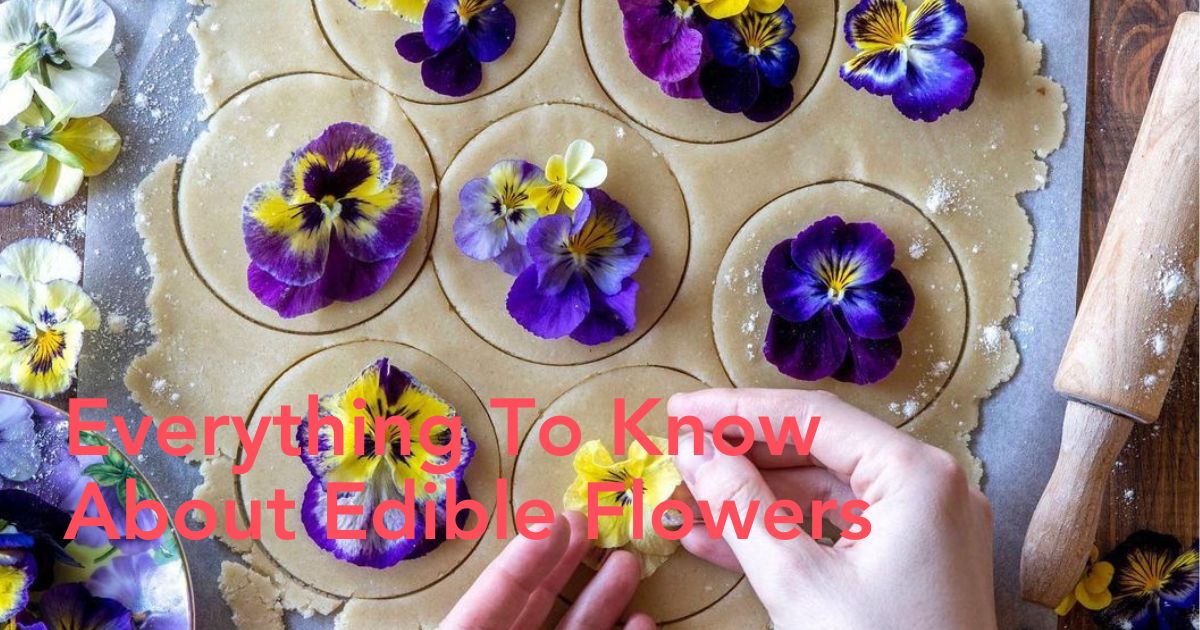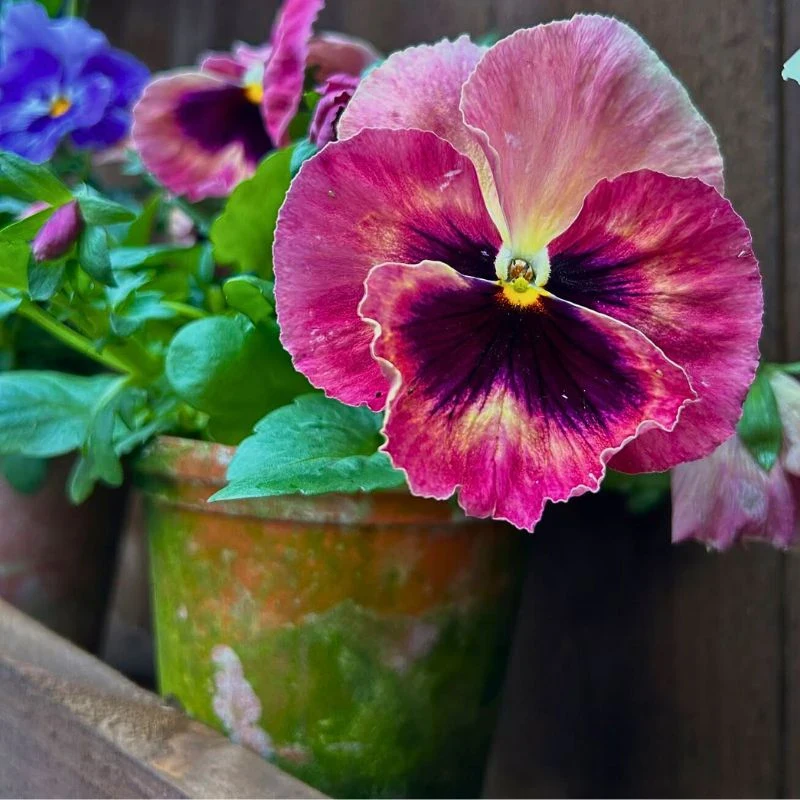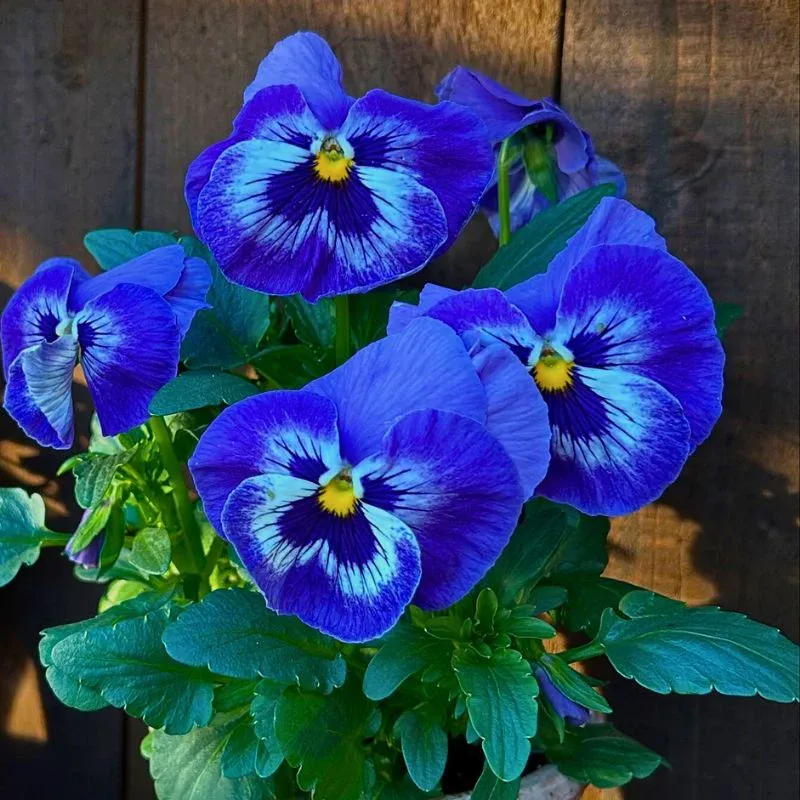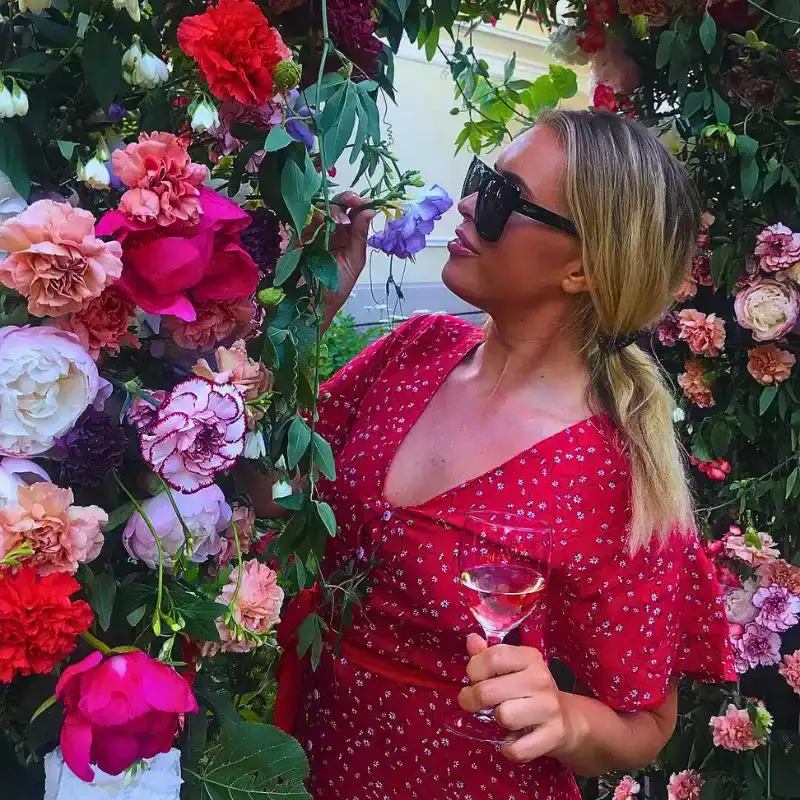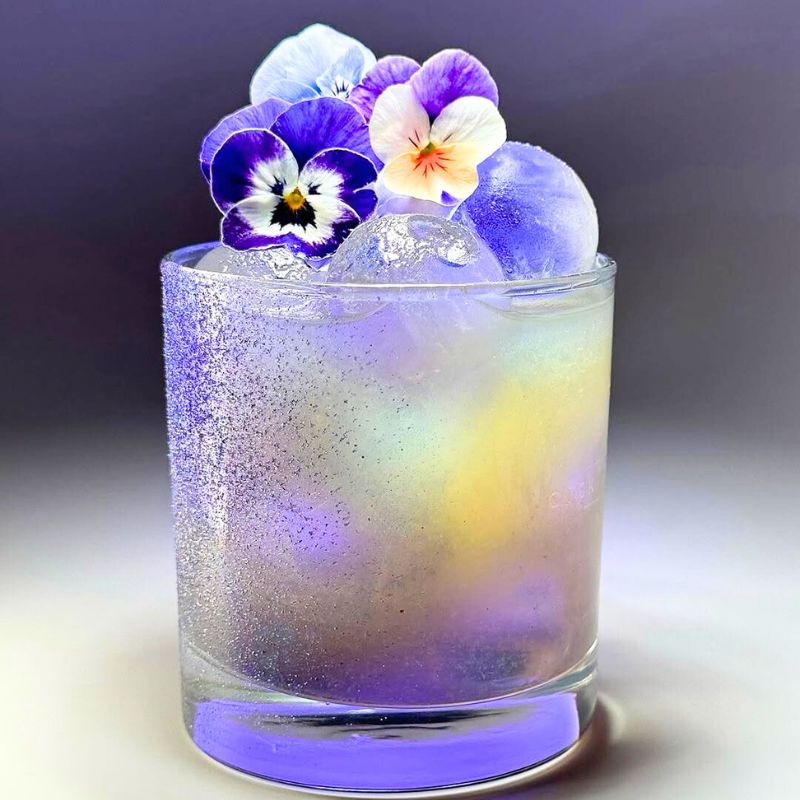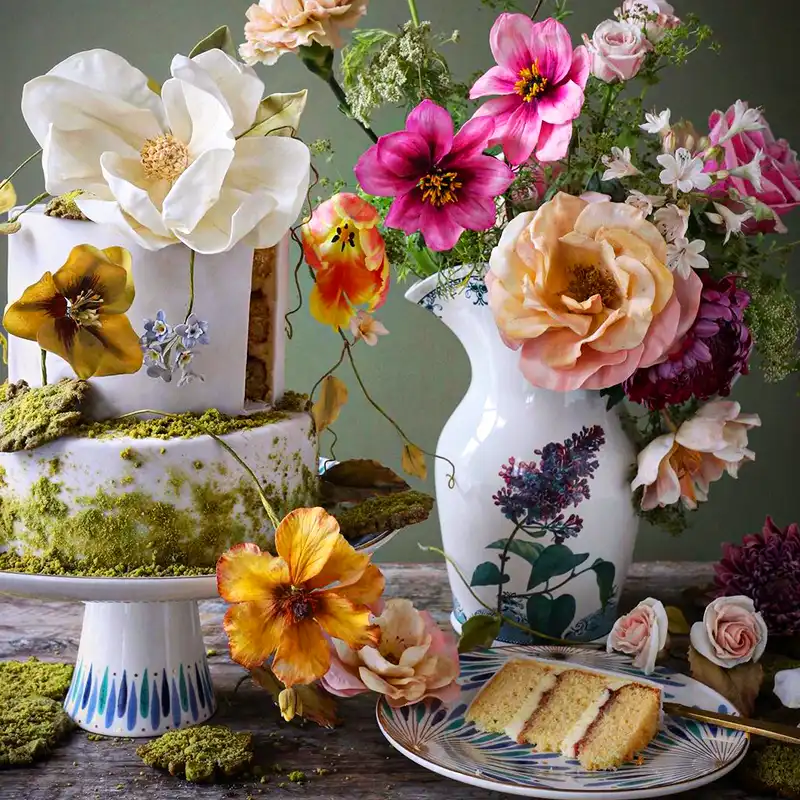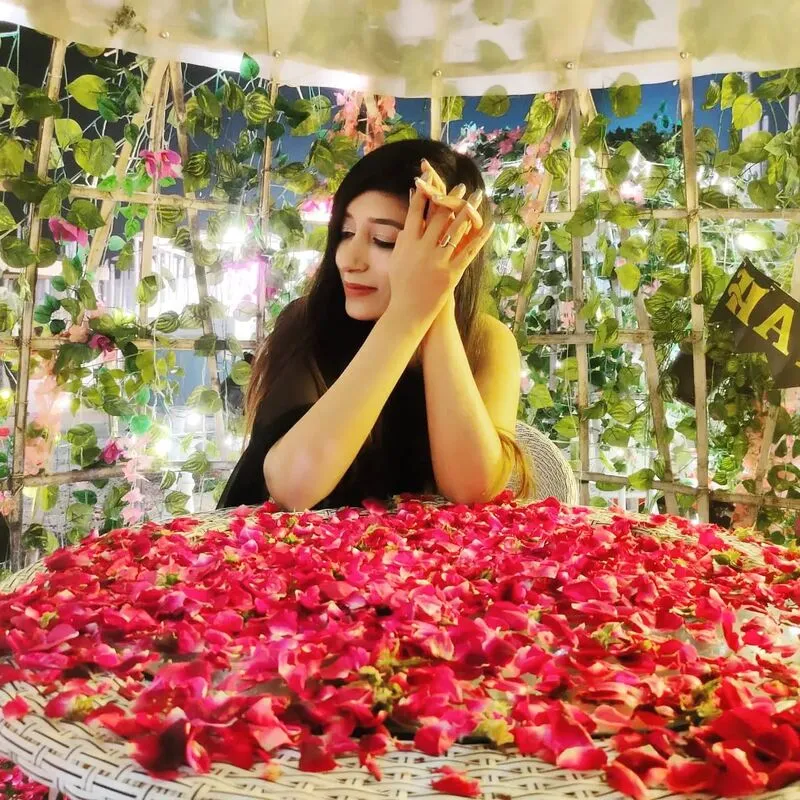From the petals that adorn desserts to the flowers that infuse drinks, edible flowers have been nature's culinary muse for centuries. They bring a unique flavor, color, and charm to the table, ensuring your dishes are not only a feast for the eyes but a delight for the palate.
In this article, we'll explore 15 of the best edible flowers (and five more), perfect for enhancing your bakery, cooking, and drink creations and bound to inspire your next culinary masterpiece.
Crafting Culinary Masterpieces with Edible Flowers
Renowned chefs like René Redzepi of Noma have long celebrated the art of using edible flowers to transform dishes into culinary masterpieces. These flowers aren't just for decoration; they add depth, flavor, and a story to every plate.
Remember the flower girl featured in one of the Shark Tank episodes? Loria Stern, with her one-of-a-kind idea with her business - "Eat Your Flowers" has some amazing ideas from her journey working on this amazingly out-of-the-box concept. Do check it out.
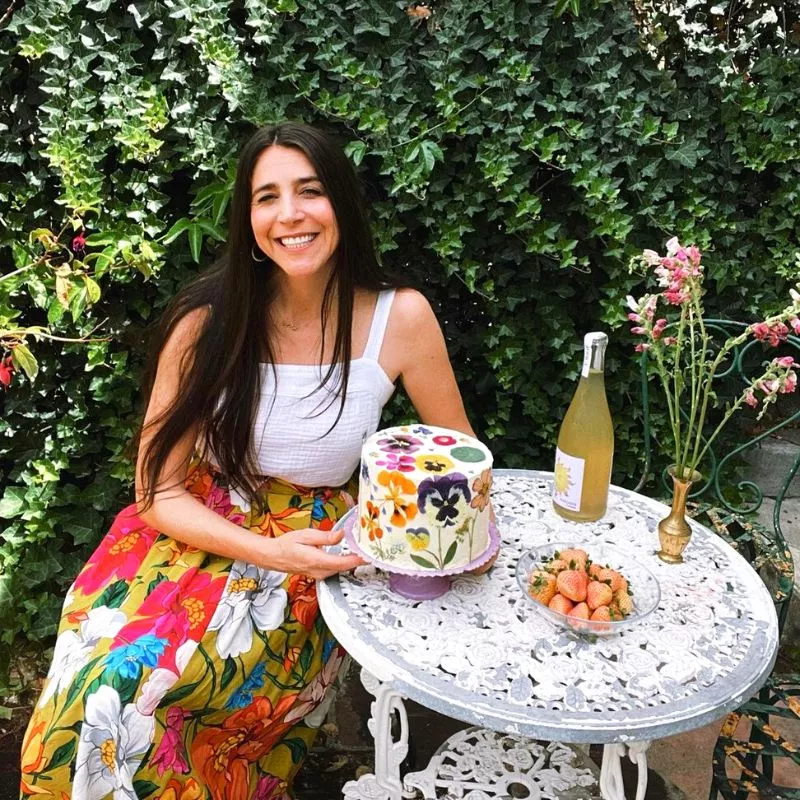
Whether sprinkling lavender over a chocolate cake or using whole flowers in fresh salads, edible flowers can craft stunning and flavorful experiences. From Michelin-star kitchens to your garden, these flowers bring a creative touch that turns simple dishes into extraordinary culinary feats.
Sweetly Scented Flowers for Culinary Delights
Sweet-scented flowers like lavender, roses, violets, lilac, and honeysuckle are more than just aromatic. Lavender offers a mild onion flavor when paired with savory dishes, while roses (Rosa spp.) can be tossed as petals to decorate desserts or infuse syrups.
Honeysuckle, with its nectar-filled blossoms, adds a sweet touch to cold drinks, making it ideal for mocktails and cocktails. These flowers bring fragrance and a lovely note to both nose and palate, creating a harmonious balance between flavor and aroma.
Adding Eye-Catching Elements with Brightly-Coloured Flowers
Brightly colored flowers can be the showstoppers in any dish. The flower petals of marigold, with their typical slightly bitter flavor, are a perfect pair for soups and salads when looking for coloring options. Pansies, with their wondrous blue flowers, and nasturtiums, with their peppery flavour, are versatile options to add to almost everything—from pasta dishes to ice cubes.

Innovative Ways to Use Edible Flowers in Recipes
Incorporating edible flowers into your recipes is like adding a touch of art to your culinary creations. The possibilities are endless, from using flower petals as a garnish in fruit salads to infusing whole flowers in ice cubes. Whether for their delicate flavor or ability to enhance the presentation, edible flowers are a versatile ingredient that deserves a place in your culinary repertoire.
Using Flower Petals as a Garnish in Fruit Salad
Using flower petals as a garnish in fruit salads adds color and a layer of subtle flavor. Rose petals and lavender can bring a sweet, fragrant note to fresh fruit salads, while marigold and nasturtium introduce a slightly bitter contrast. But why stop there? Chef Yotam Ottolenghi suggests adding borage (Borago officinalis), with its cucumber-like taste, to fruit salads for a refreshing twist.

For an unexpected touch, toss individual petals of daylilies (Hemerocallis spp.) into the mix—these petals have a mild, sweet flavor that pairs beautifully with melon and berries. The next time you prepare a fruit salad, consider the added depth and visual appeal that edible flowers can provide. These vibrant, edible blossoms can be a game-changer in turning a simple dish into a work of art that impresses visually and gastronomically.
Elevating Savory Dishes with Edible Flowers
Savory dishes gain an unexpected twist with the addition of edible flowers. Squash blossoms, known for their mild onion flavor, are ideal for stuffing, while unopened flower buds like capers bring texture and a slightly bitter edge to dishes. Nasturtiums add a peppery flavor to fish dishes and pasta, enhancing the overall flavor profile without overpowering the dish.
Chef Alice Waters of Chez Panisse recommends using chive flowers (Allium schoenoprasum) in salads and sauces for their mild onion bite, while dill flowers add aromatic flavor to lamb dishes.
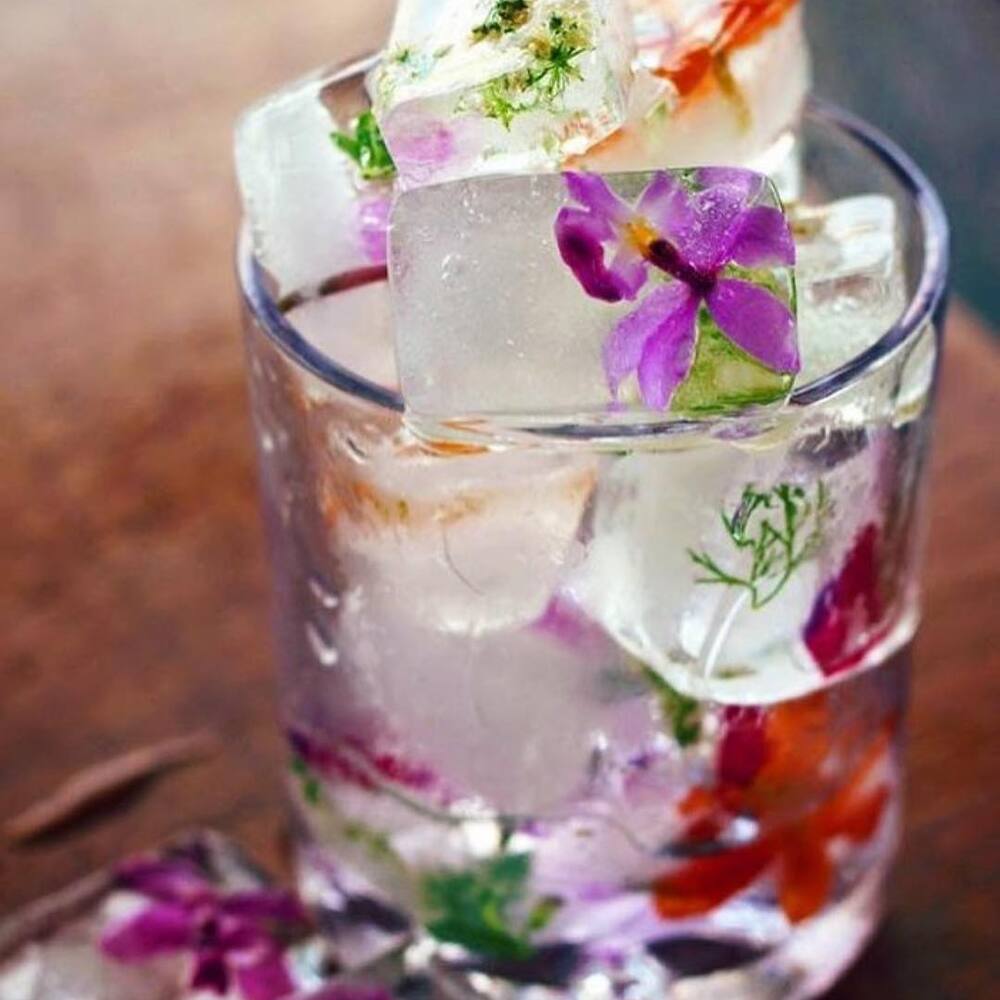
Another innovative idea comes from Chef Thomas Keller, who uses coriander flowers to add a citrusy note to delicate fish dishes. Incorporating these flowers into your savory creations adds complexity and a touch of nature’s artistry, elevating the dining experience.
Incorporating Flowers into Baking and Pastry Art
Bakery and pastry art reach new heights with the inclusion of edible flowers. With its intense flavor, lavender pairs beautifully with chocolate cake and soft cheeses, while the whole flowers of violets and rose petals bring a sweet, visual charm to baked goods.
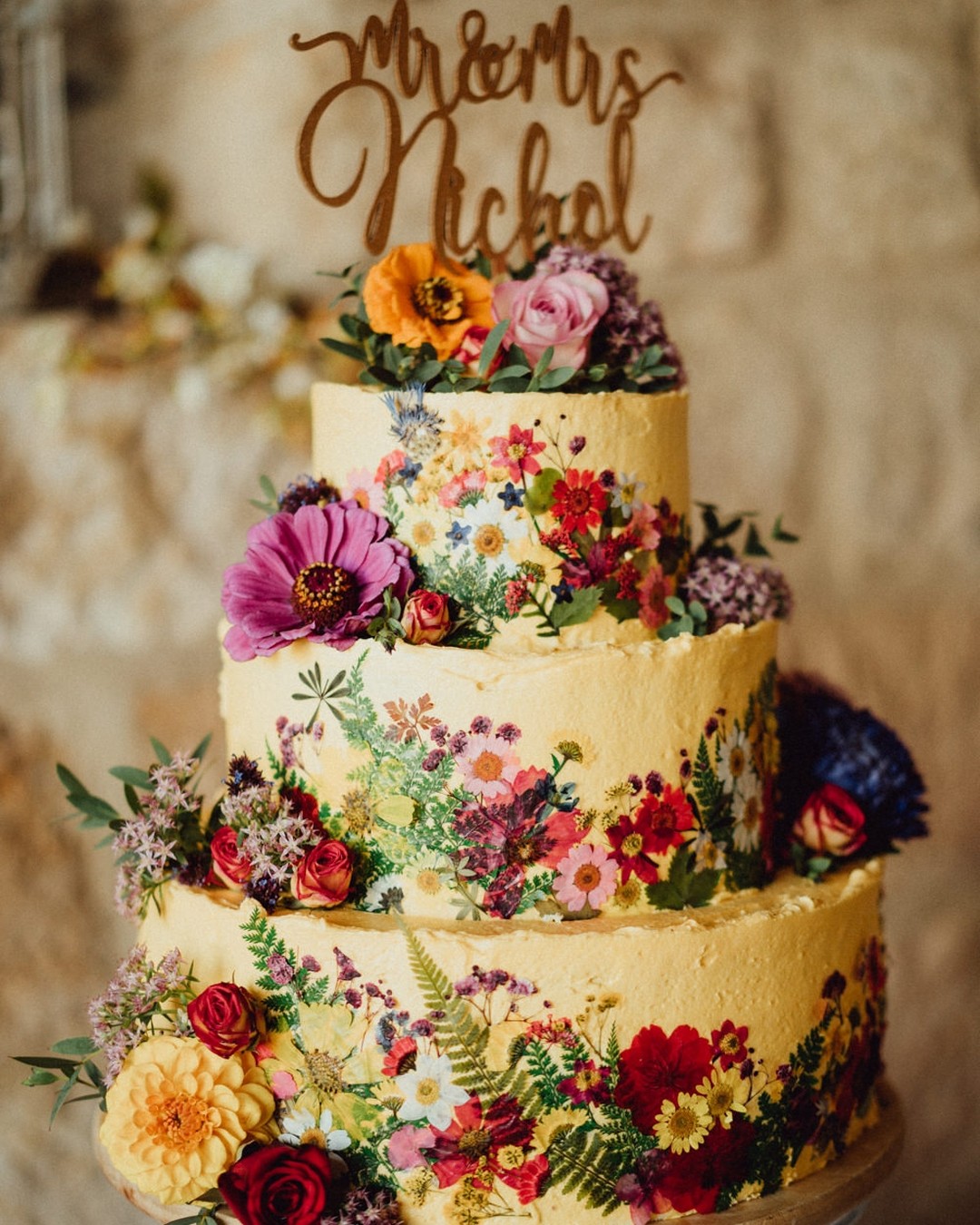
To take it further, Chef Claire Ptak of Violet Bakery suggests using elderflower (Sambucus nigra) to create a syrup that can be drizzled over cakes or mixed into icings. Meanwhile, with their tart, cranberry-like taste, hibiscus flowers add a delightful contrast when infused into baked goods like scones and pastries.
For those seeking a nutty undertone, consider incorporating red clover (Trifolium pratense) blossoms into your baked treats. These edible flowers offer endless possibilities to elevate your baking, turning everyday desserts into show-stopping creations. Talking of bakery, we have also covered the work and thoughts of Natasja Sadi, a baker and floral creative whose work has been featured in Victoria Magazine, Elle Decor, Dutch Vogue, and more! Check it out.
Infusing Flowers to Style Up Your Drinks!
Flowers are the secret ingredient to elevating both cocktails and mocktails. Fresh flowers like hibiscus, lavender, and elderflower infuse cold drinks with a delicate flavor, while ice cubes containing edible flowers like pansies and violas add a visual spectacle.
Mixologist Ryan Chetiyawardana, also known as Mr. Lyan, recommends adding rosemary flowers (Rosmarinus officinalis) to gin-based cocktails for a touch of herbal complexity. For something truly unique, try infusing drinks with scented geraniums (Pelargonium spp.)—their varied fragrances can range from lemony to minty, offering endless creative possibilities.
Whether it’s a garden party or a cozy gathering, these floral infusions bring flavor and flair to your beverages. By experimenting with different flowers, you can create unique drink experiences that taste delightful and captivate the eye.
List of the Top Most Popular Edible Flowers
The most fantastic part about edible flowers is their ability to offer multiple health benefits, from calming mental stress to anxiety and digestive, respiratory, and skin issues. Keep reading to know the best edible flowers list for baking, cooking, and drinks, with a few more special mentions on the list.
Rose (Rosa spp.)
Roses date back to historical Romanic times when ancient Romans used roses to cook, and, most impressively, a secret many of you may not know, they used roses to add flavor to the wine. Originating in English country gardens, roses' delicate yet pleasant fragrance is often used to refine desserts, jams, jellies, and cocktails. Still, they also result in one of the best edible flowers used to crystalize cake decorations. Roses are the number one best edible flowers used for baking, cooking, and drinks.

Lavender (Lavandula angustifolia)
The beautiful purple flowers featured in lavenders are very well known to promote relaxation and help with sleep problems. Lavender is also surely considered one of the best edible flowers because it can improve the taste of both sweet and savory foods. It is quite impressive and also, without a doubt, my favorite one on this list!
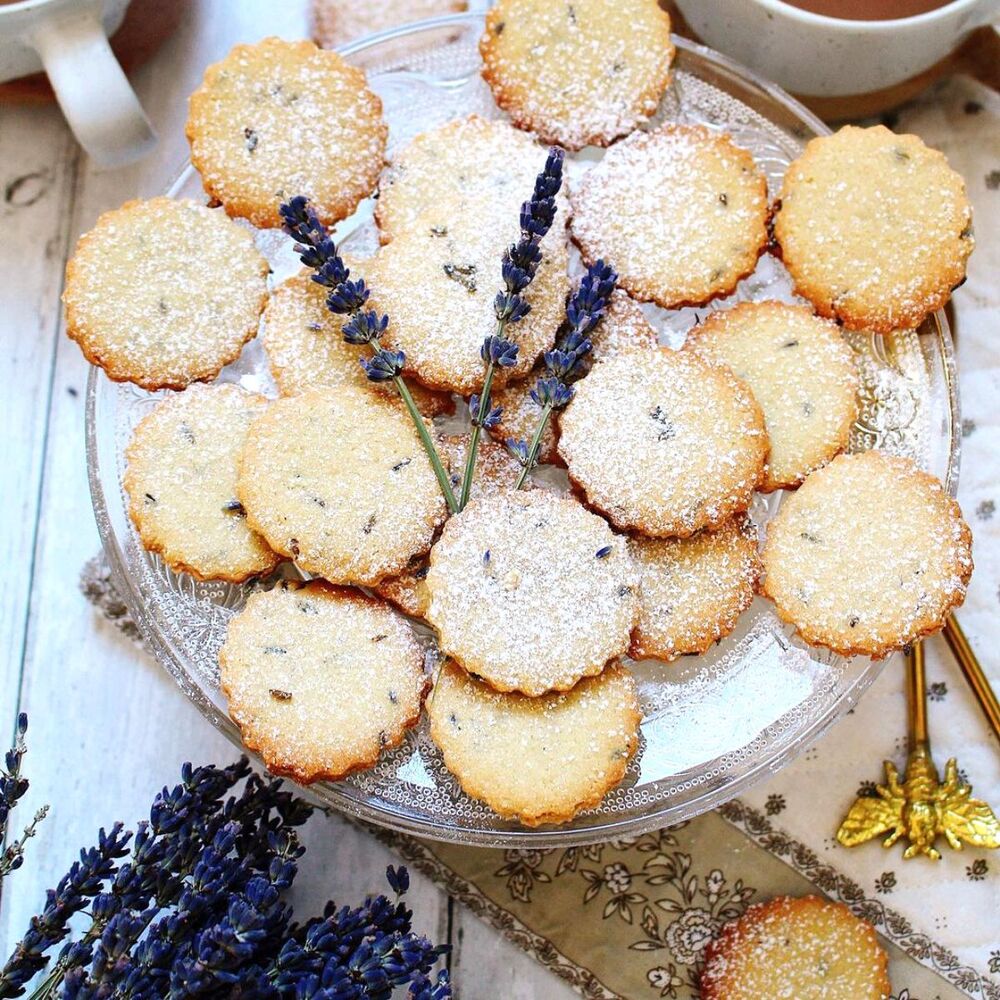
Sunflower (Helianthus annuus)
Have you ever heard of sunflower oil? Yep, helianthus can provide this and many other nutrients, but it is also one of the best edible flower choices for the kitchen. Sunflowers are 100% edible flowers with a slightly nutty flavor.
Tip: Always make sure to do your research on any edible flower you're planning on eating or including on any plate, as they may trigger allergic reactions or may have certain parts of the plant that may be poisonous.

Carnation (Dianthus caryophyllus)
Carnations are ideal for projecting a glimpse of color into salads or soups, but it's best recommended to tear the petals off rather than use the whole flower because the base has a bitter taste. When it comes to their taste in food, you might as well expect something spicy and clove-like, especially from flowers with a strong scent. The dianthus is one of the top edible flowers used by bakers and is a lovely flavor complement to ice cream, seafood, and sauces.

Daisy (Bellis perennis)
Daisies are among the 15 best edible flowers for baking, cooking, and drinks. The flower heads of this all-time favorite flower can be used to decorate food (given they do not have much flavor), while the buds make an excellent substitute for capers once preserved in vinegar. This flower is known as one of the best edible flowers because you can make yourself a daisy tea, rich in vitamin C and anti-inflammatory properties.
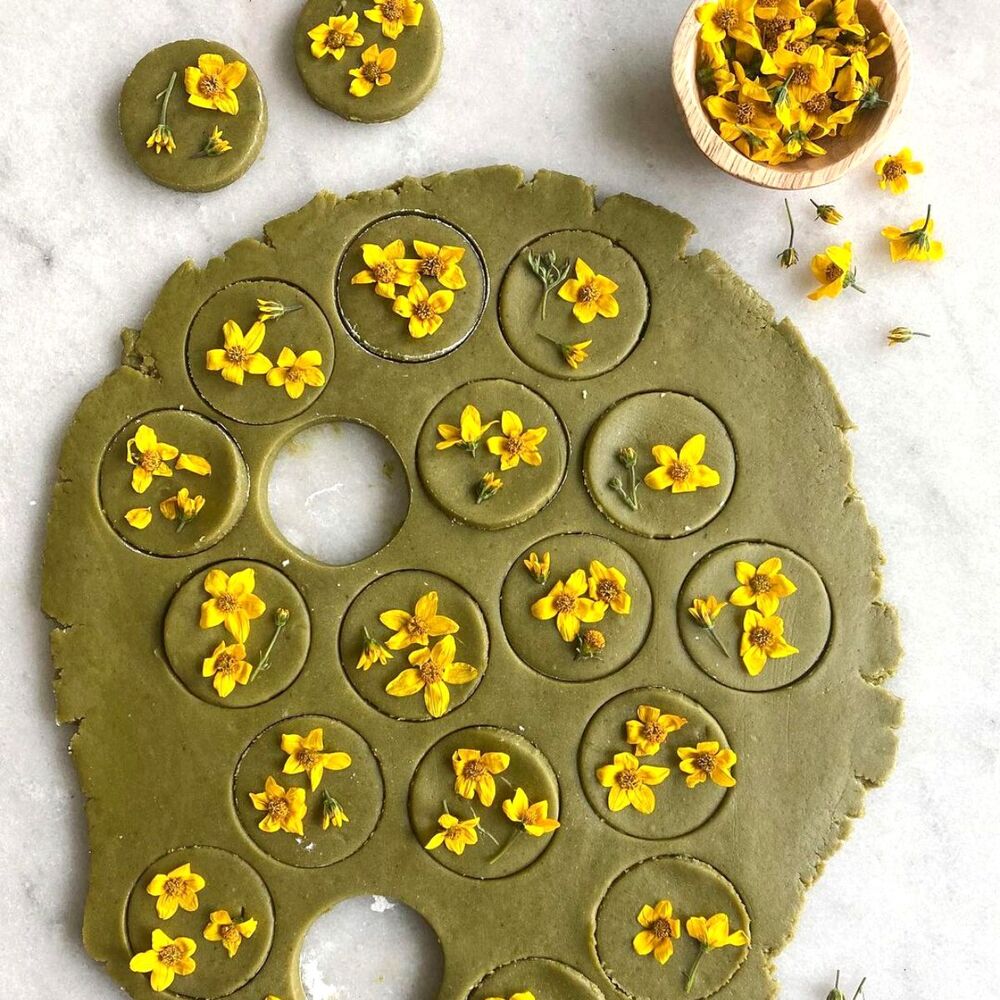
Elderflower (Sambucus nigra)
If you're a lemon fan and love cooking lemon desserts, this tiny white bloom is the perfect match for lemon in baking. Elderflowers are one of the best edible flowers used in lots of wedding cakes, including a mild recipe with lemon. If you're thinking about a wedding cake, consider adding elderflower, one of the best edible flowers for wedding cakes.
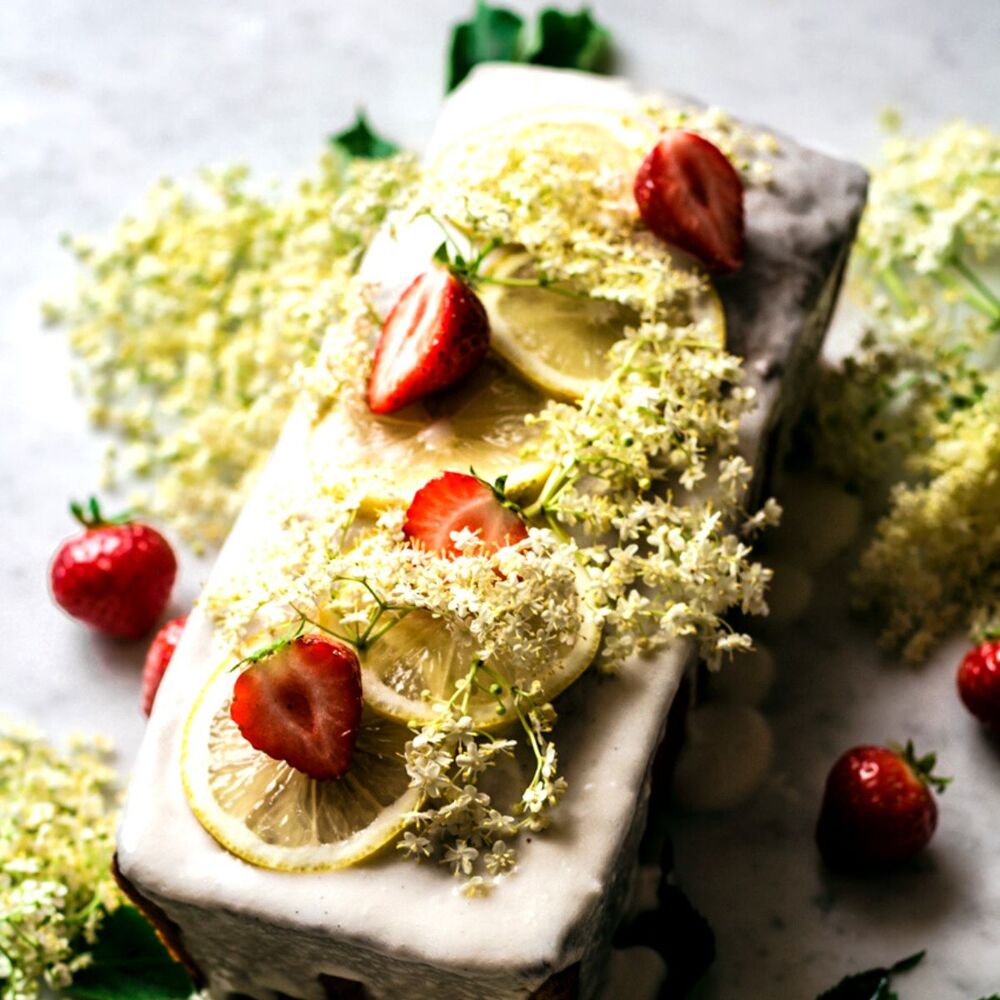
Just be aware: although the cooked berries (pulp and skin) of most Sambucus species are edible and known to have medicinal benefits, the uncooked berries and other parts of plants from this genus are poisonous.
Pansy (Viola tricolor)
Pansies (viola spp.) are one of the best edible flowers, especially in wedding cakes. Foodies love these beauties as they come in a wide range of colors and sizes, from strong, passionate reds and oranges to rich blues and purples. Eaten raw, pansies (a.k.a. violas) have a fresh, grassy flavor with a touch of spice. Check out this interesting floral art made with these herbs by Lauren May.

Echinacea (Echinacea purpurea)
The roots of the popular echinacea can be dried to create an herbal tea, giving the body incredible health benefits such as anti-inflammatory and cold-relieving properties. So if you’re feeling like you could get sick, pour yourself a cup of echinacea tea, one of the best edible flowers for drinks.
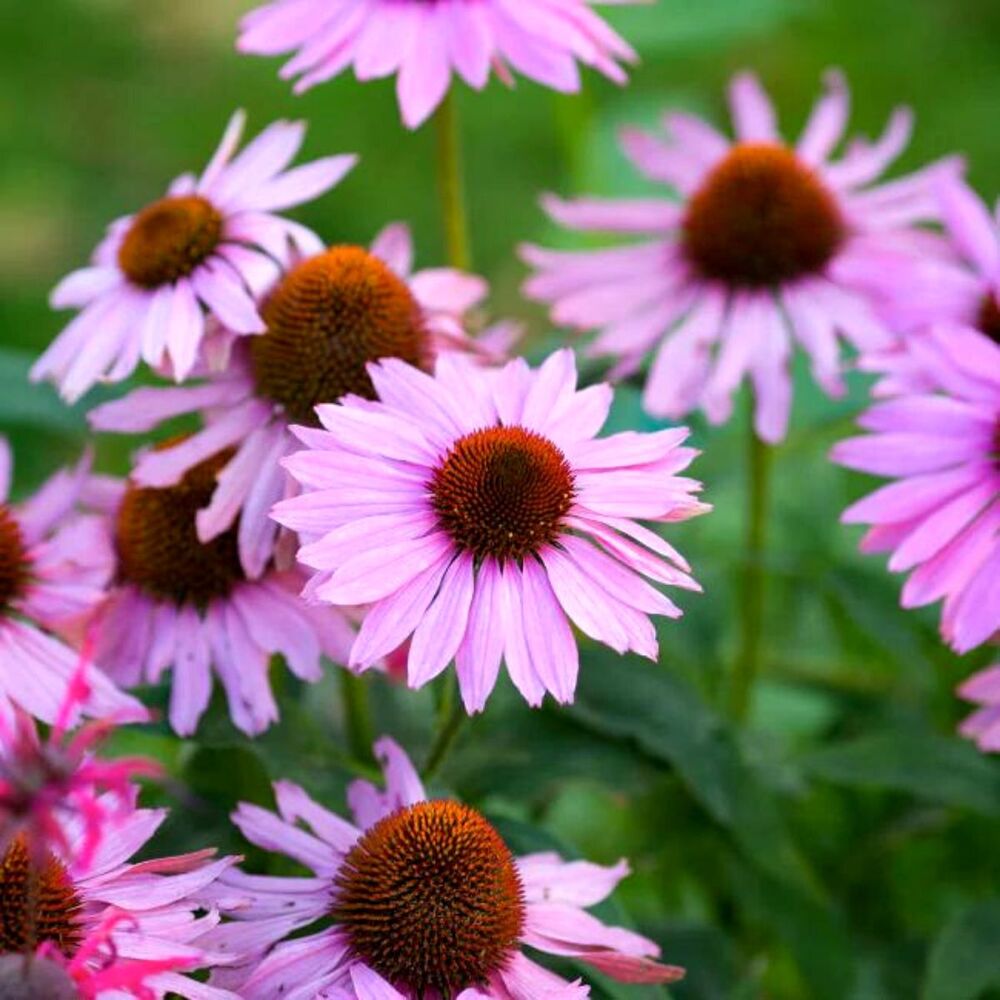
Hibiscus (Hibiscus sabdariffa)
Have you ever tried hibiscus tea? If not, you're at a loss! Hibiscus flowers have a softly citrus flavor, which makes them perfect for an early-day or mid-afternoon drink. Their brightly colored petals often appear in fruit salads, relishes, and jams, making them one of the best edible flowers for special cooking recipes or herbal teas.

Chrysanthemums (Chrysanthemum morifolium)
Chrysanthemums are one of the best edible flowers used by the Japanese to make a special spicy soup, featuring mushrooms, ginger, prawns, chicken, and miso. As part of their use in the kitchen, you can also lightly fry their petals in vegetable oil before adding them to stir-fries and salads.
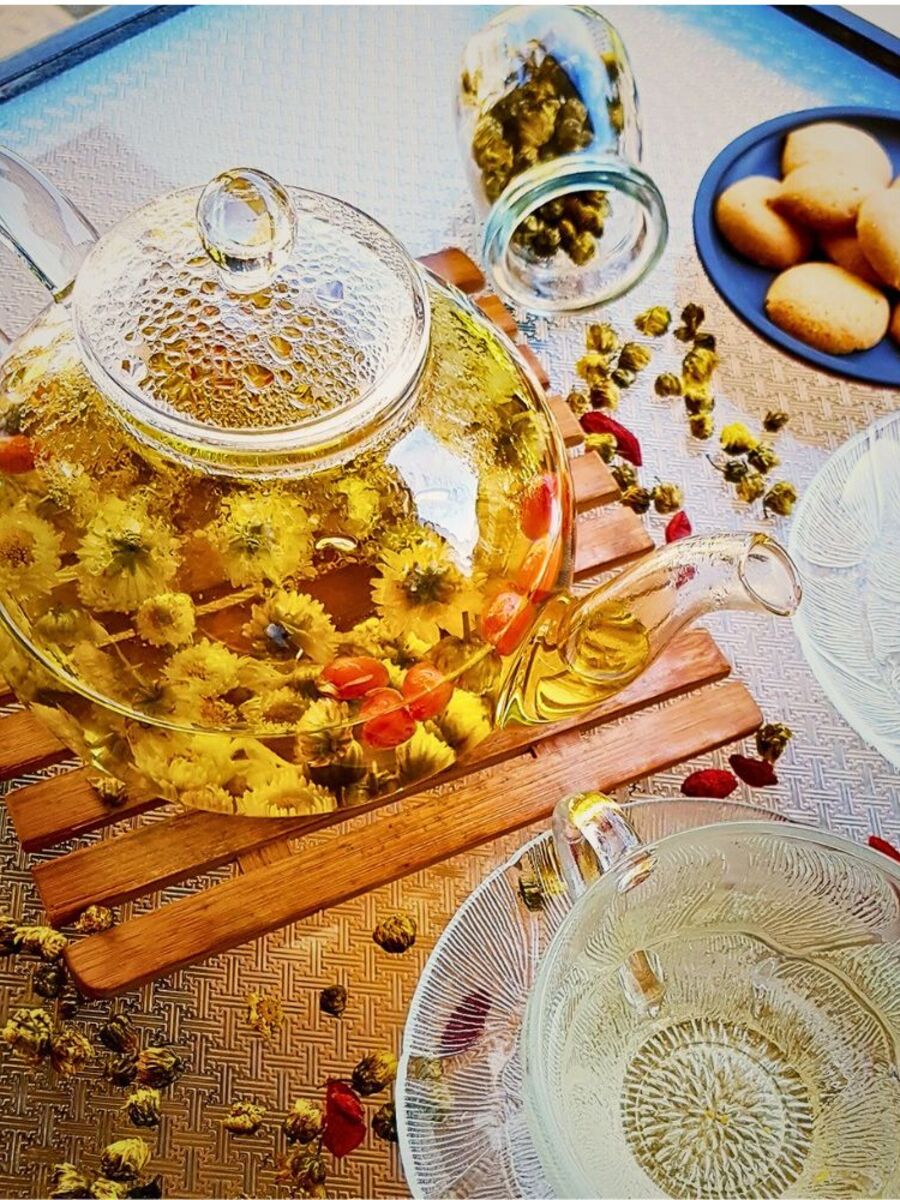
Nasturtium (Tropaeolum majus)
Orange, red, and yellow nasturtiums, a.k.a. Tropaeolum have a peppery flavor, making them tasty in salads and garnishes. Their pickled buds can make excellent substitutes for capers. Once again, here's another one of the 15 best edible flowers to use while you hack your kitchen and experiment with recipes.

Marigold (Tagetes spp.)
Marigolds are fabulous for adding color to soups and salads, while their spicy, citrusy taste adds an explosion of flavors. If you don’t want to spend money on pricey saffron, they make a good substitute for giving butter, rice, or baked goods a golden touch. Pot marigolds (Calendula officinalis) can also be easily grown at home, so don't worry about where your edible flowers are sourced!

Dandelion (Taraxacum officinale)
One of the 15 best edible flowers for baking, cooking, and drinks is dandelions—or taraxacum. You can eat the whole plant, which is packed with vitamins and minerals, and the sunny yellow flowers serve as a base for homemade dandelion wine. If you love your coffee but are trying to cut down on caffeine, try roasting and grinding the root of your dandelion for a healthier and more fulfilling alternative.

Starflower (Borago officinalis)
The bright blue flowers featured in this fuzzy herb—starflower, a.k.a. borage—have a fresh cucumber taste that'll give your fruit and veggie salads the freshness you've been looking for. If you want to get more creative in the kitchen, try freezing the flowers in ice cubes to make a divine drink using one of the best edible flowers.

Chamomile (Matricaria chamomilla)
Looking to relax and let go of that extra stress? Chamomile is an amazing edible flower that is usually enjoyed as a relaxing pre-bedtime tea. Its small, daisy-like flowers have a homely apple-like flavor, and they're a great option to mix into fruity bake sessions or sprinkle over fresh salads.

Crane's Bill or Geraniums (Scented Leaf Pelargoniums)
Crane's bill, or scented leaf pelargoniums, offers flavors ranging from citrus lemon to rose, mint, and even nutmeg. These versatile flowers and leaves often infuse sugars or create fragrant syrups for desserts and beverages. Some culinary experts recommend incorporating leaves and petals into savory dishes, adding a touch of aromatic sweetness.
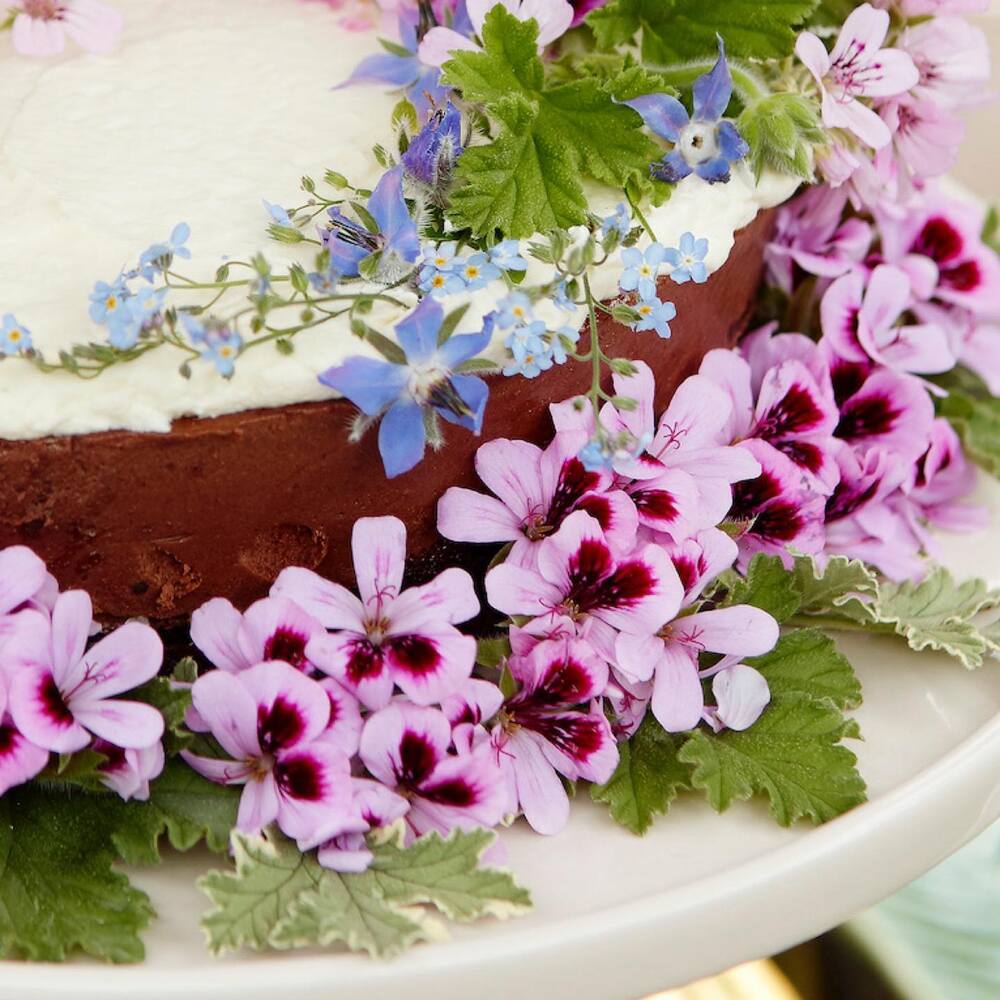
Anise Hyssop (Agastache foeniculum)
Anise hyssop, with its licorice-like flavor, is a unique addition to sweet and savory dishes. This herb’s flower and young leaves can be used fresh or dried, offering a slightly sweet note that pairs beautifully with lemon balm and other herbs. The purple spikes of this plant are often used to garnish salads or to flavor homemade liqueurs.

Its milder flavor makes it versatile enough for baked goods and herbal teas. Beyond the kitchen, anise hyssop is also known for its medicinal properties, including a mild diuretic effect, making it a favorite among herbalists.
Garden Phlox (Phlox paniculata)
Garden phlox, also known as perennial phlox, is a visual delight in the garden and a tasty addition to your kitchen. The slightly spicy petals can decorate salads, cakes, and other dishes. With their subtle flavor, these white flowers are best when eaten fresh, offering a mild sweetness that complements a variety of dishes.

It’s worth noting that only certain phlox varieties are edible, so stick to garden phlox and avoid flowers from unknown varieties. When paired with herbs like mint (Mentha spp.) or lemon balm, garden phlox can bring an unexpected twist to your culinary creations.
Red Clover (Trifolium pratense)
Red clover, often found in meadows, brings both beauty and nutrition to the table. Known for its rich, slightly sweet taste, the flowers and leaves of red clover can be added to salads, soups, and even baked goods. Herbalists often use red clover blossoms to make teas believed to support kidney health and relieve symptoms of menopause.

This edible flower is also a good source of vitamins and minerals, making it a flavorful and health-boosting addition to dishes. However, individuals consuming large amounts should be mindful of its potential diuretic effect.
Daylily (Hemerocallis)
Daylilies, with their colorful, trumpet-shaped flowers, are a culinary treasure. Both the flowers and unopened buds can be stir-fried, stuffed, or added to salads. The petals have a crisp texture and a slightly sweet flavor, which contrasts nicely with the mildly bitter white base of the flower.

Traditional Chinese cuisine often uses daylilies in soups and stews for their flavor and texture. However, using Hemerocallis species is crucial, as some lilies can be toxic. When harvested a day early, these flowers are at their freshest and most flavorful. Daylily is also a preferred plant of choice for rooftop gardens. Check out other list of such plants here.
Rosemary (Rosmarinus officinalis)
Rosemary is a beloved herb in the garden and the kitchen, known for its piney, aromatic flavor. Its small, blue flowers can be used in a variety of dishes, from lamb and chicken to bread and infused oils. The flowers and leaves of rosemary have a slightly bitter flavor that pairs wonderfully with roasted meats and hearty soups.

When creating floral-infused cocktails, rosemary flowers add a sophisticated touch without overpowering the drink. Combine rosemary with other herbs like mentha spp. or lemon balm to create a multi-layered flavor profile for a unique twist. As with all edible flowers, be sure to pick your flowers to ensure they are pesticide-free.
Additional Tips When Handling Edible Flowers
Working with edible flowers requires creativity but with caution. These delicate ingredients can elevate your dishes, but only if handled correctly. There's much to consider, from ensuring they're free of pesticides to understanding which parts are safe to consume.
Safety First: Precautions for Using Edible Flowers
Remember, not all flowers are safe to eat, and even edible ones can cause an adverse reaction in some individuals. Always verify the species before consuming or using them in your dishes, and avoid flowers from florists, nurseries, or garden centers unless labeled as edible—these might contain pesticides or other chemicals.
If you're growing your flowers, ensure they're free from chemical treatments. Individuals consuming edible flowers for the first time should start with small quantities to monitor for any adverse reaction, especially those with allergies. Remember, some flowers can have toxic parts, so it's crucial to use only the edible portions and handle them with care.
Proper Preparation and Handling Techniques
Proper preparation and handling of edible flowers are key to getting the best flavor and ensuring safety. Always pick flowers early in the morning when they are freshest, ideally a day early before full bloom. Rinse them gently in cold water to remove dirt and insects, and then pat dry carefully with a soft towel.
If you use the flowers immediately, store them in a cool, damp paper towel to maintain freshness. Consider drying flowers like lavender or chamomille for long-term storage for teas and baked goods.
Also, remove the bitter white base of flowers like dandelions to avoid unwanted bitterness in your dishes. When preparing dishes with edible flowers, toss individual petals into salads or desserts rather than use the whole flower to balance the flavors and textures.

